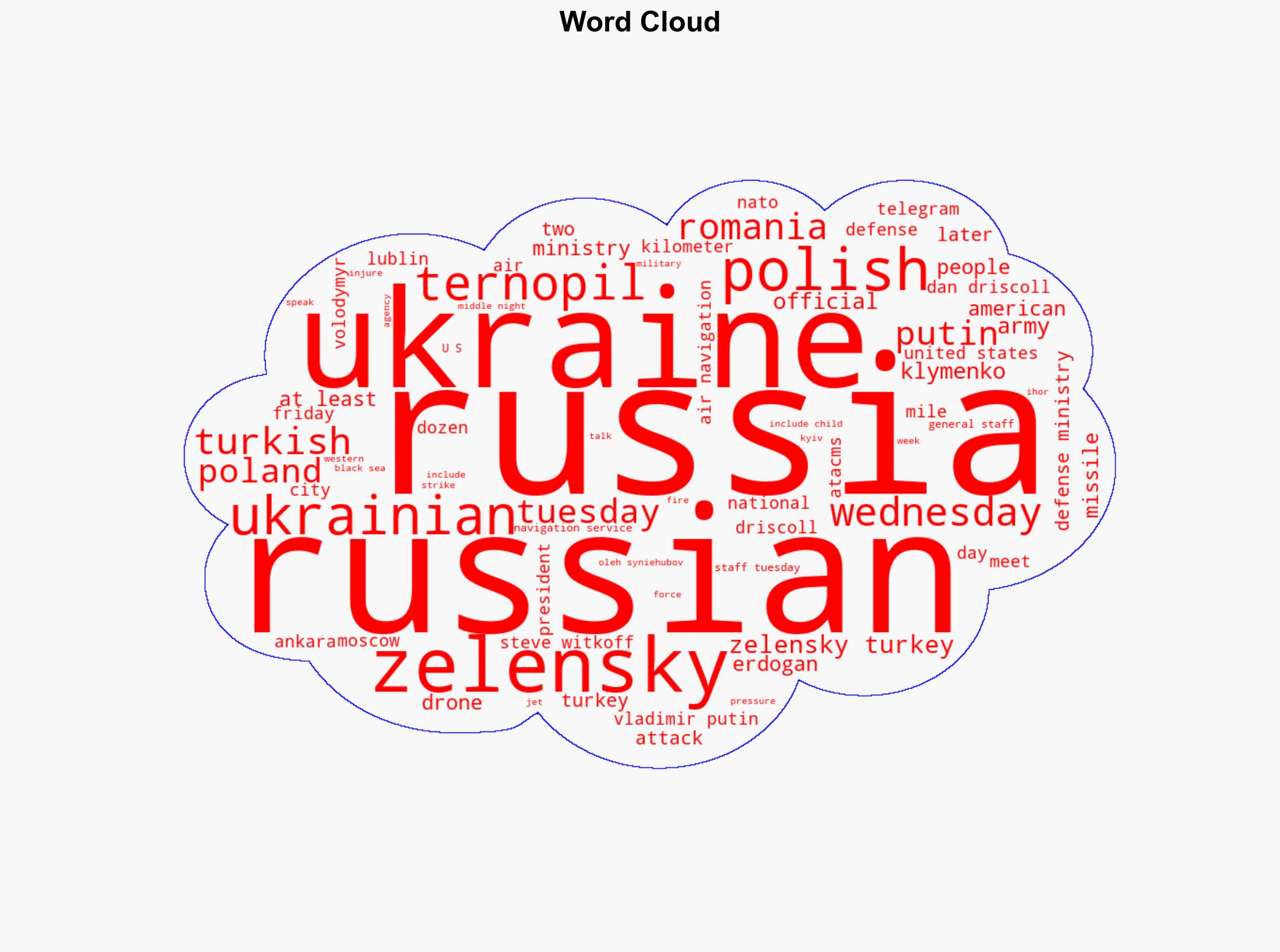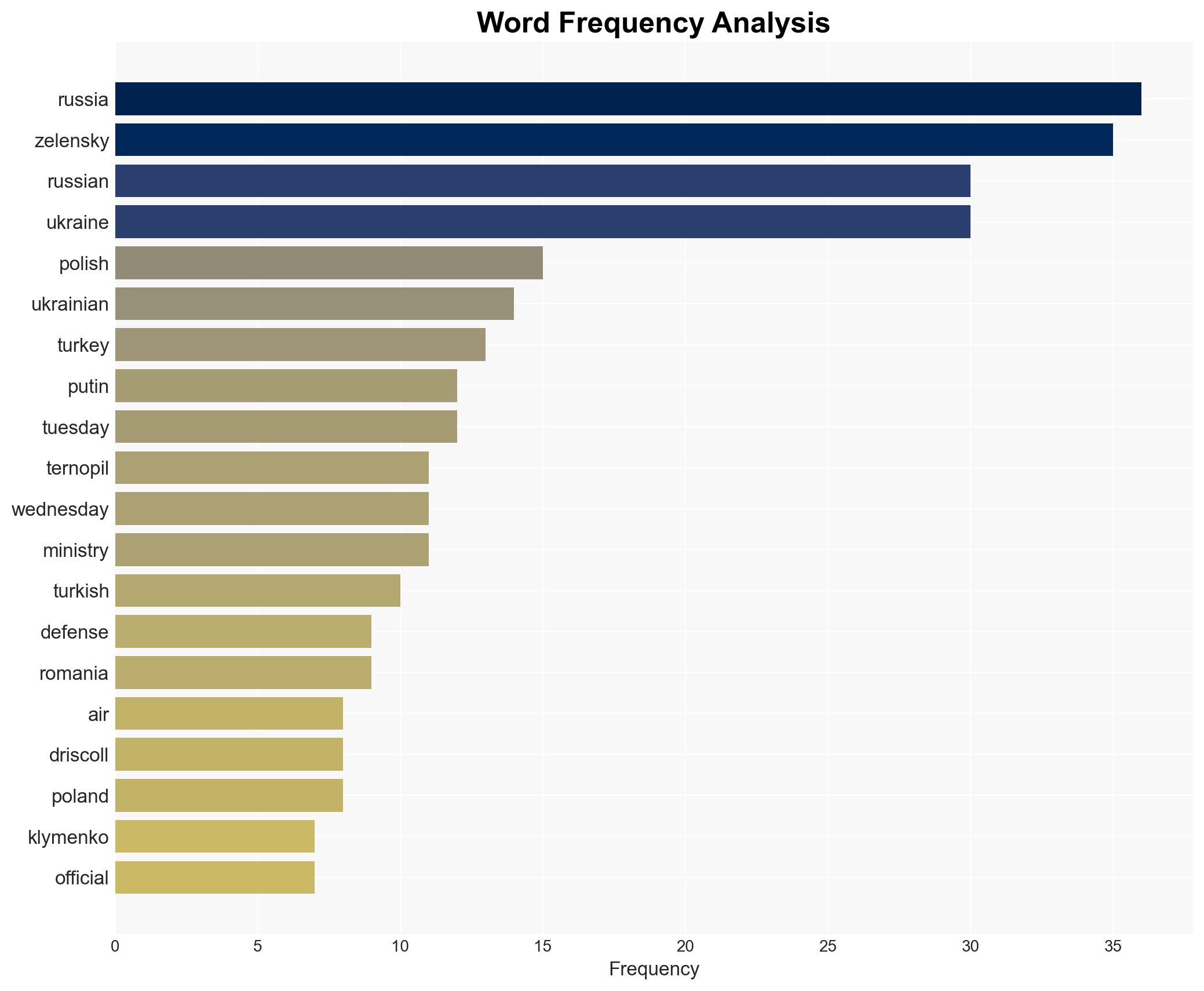Russian apartment attack leaves at least 25 dead in western Ukraine – New York Post
Published on: 2025-11-20
AI-powered OSINT brief from verified open sources. Automated NLP signal extraction with human verification. See our Methodology and Why WorldWideWatchers.
Intelligence Report:
1. BLUF (Bottom Line Up Front)
With a moderate confidence level, the most supported hypothesis is that the Russian attack on the apartment block in Ternopil, Ukraine, is a strategic move to exert pressure on Ukraine and its allies, particularly in light of President Zelensky’s diplomatic efforts in Turkey. The recommended action is to enhance diplomatic efforts to isolate Russia while strengthening air defense systems in Western Ukraine to prevent further civilian casualties.
2. Competing Hypotheses
Hypothesis 1: The attack is a deliberate Russian strategy to intimidate Ukraine and its allies, aiming to disrupt diplomatic efforts and maintain pressure on Ukraine. This hypothesis is supported by the timing of the attack coinciding with President Zelensky’s diplomatic visit to Turkey and the involvement of NATO member states like Romania and Poland in response.
Hypothesis 2: The attack is a tactical military operation targeting Ukrainian military-industrial facilities, with civilian casualties being collateral damage. This is supported by Russia’s defense ministry’s claim of targeting energy and military-industrial sites. However, the significant civilian impact suggests a broader strategic intent beyond mere military objectives.
Hypothesis 1 is more likely given the broader geopolitical context and the strategic timing of the attack.
3. Key Assumptions and Red Flags
Assumptions: It is assumed that Russia’s primary goal is to destabilize Ukraine and undermine its international support. Another assumption is that Ukraine’s air defense capabilities are currently insufficient to fully intercept Russian missile and drone attacks.
Red Flags: The potential for misinformation or propaganda from both Russian and Ukrainian sources, which could skew the perception of the attack’s intent and impact.
Deception Indicators: Russia’s narrative of targeting military facilities may be a cover for broader intimidation tactics aimed at civilians and international observers.
4. Implications and Strategic Risks
The attack risks escalating tensions between Russia and NATO, particularly if further incursions into NATO airspace occur. Politically, it could undermine diplomatic efforts by Ukraine to gain international support. Economically, continued attacks may deter foreign investment and aid to Ukraine. Informationally, the attack could be used by Russia to sow discord and fear within Ukraine and among its allies.
5. Recommendations and Outlook
- Enhance diplomatic efforts to isolate Russia internationally, leveraging the attack as evidence of Russian aggression.
- Strengthen air defense systems in Western Ukraine, potentially with NATO support, to protect civilian areas.
- Best-case scenario: Increased international pressure leads to a de-escalation of hostilities.
- Worst-case scenario: Further Russian attacks provoke a broader conflict involving NATO.
- Most-likely scenario: Continued sporadic attacks by Russia with ongoing diplomatic efforts by Ukraine to garner support.
6. Key Individuals and Entities
Volodymyr Zelensky, Recep Tayyip Erdogan, Ihor Klymenko, Dan Driscoll.
7. Thematic Tags
Regional Focus, Regional Focus: Eastern Europe, Russia-Ukraine Conflict, NATO Relations
Structured Analytic Techniques Applied
- Causal Layered Analysis (CLA): Analyze events across surface happenings, systems, worldviews, and myths.
- Cross-Impact Simulation: Model ripple effects across neighboring states, conflicts, or economic dependencies.
- Scenario Generation: Explore divergent futures under varying assumptions to identify plausible paths.
Explore more:
Regional Focus Briefs ·
Daily Summary ·
Support us





